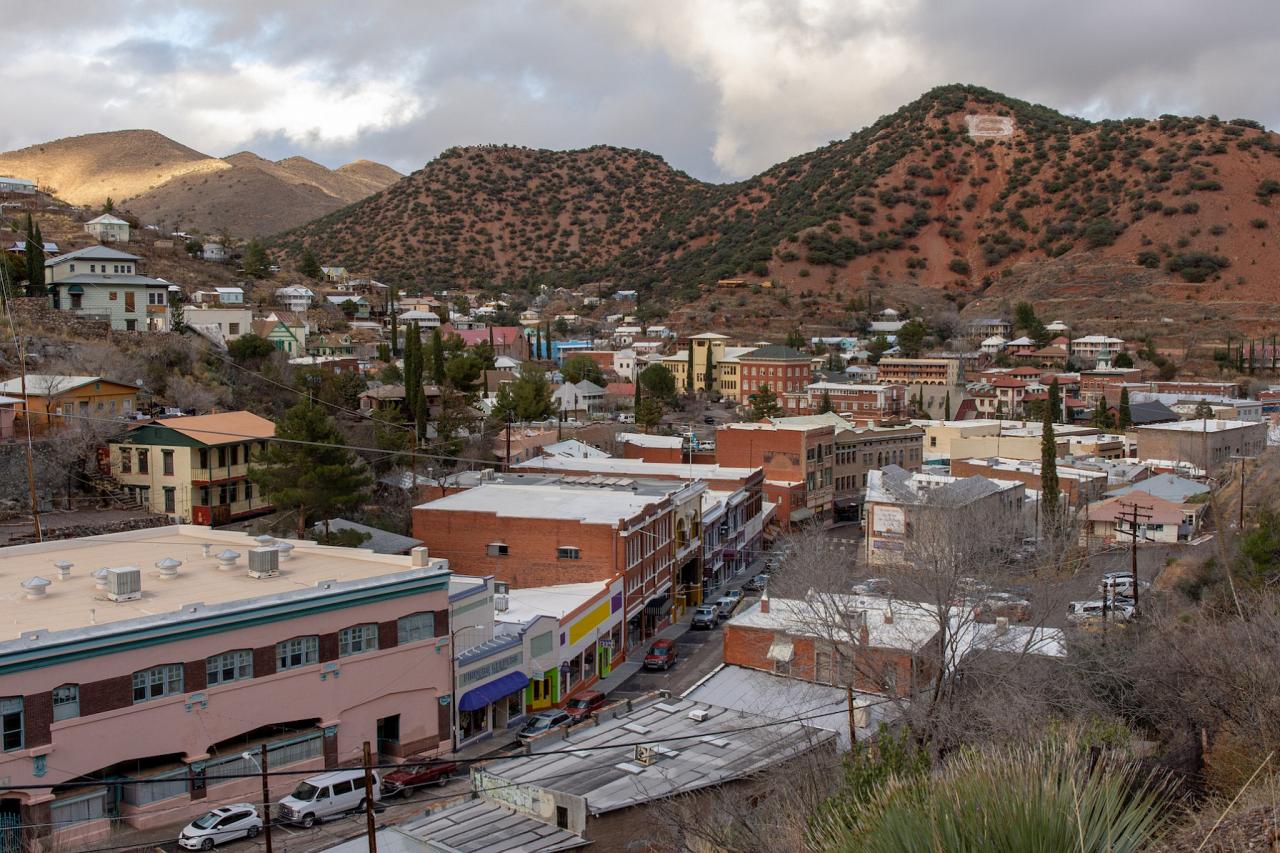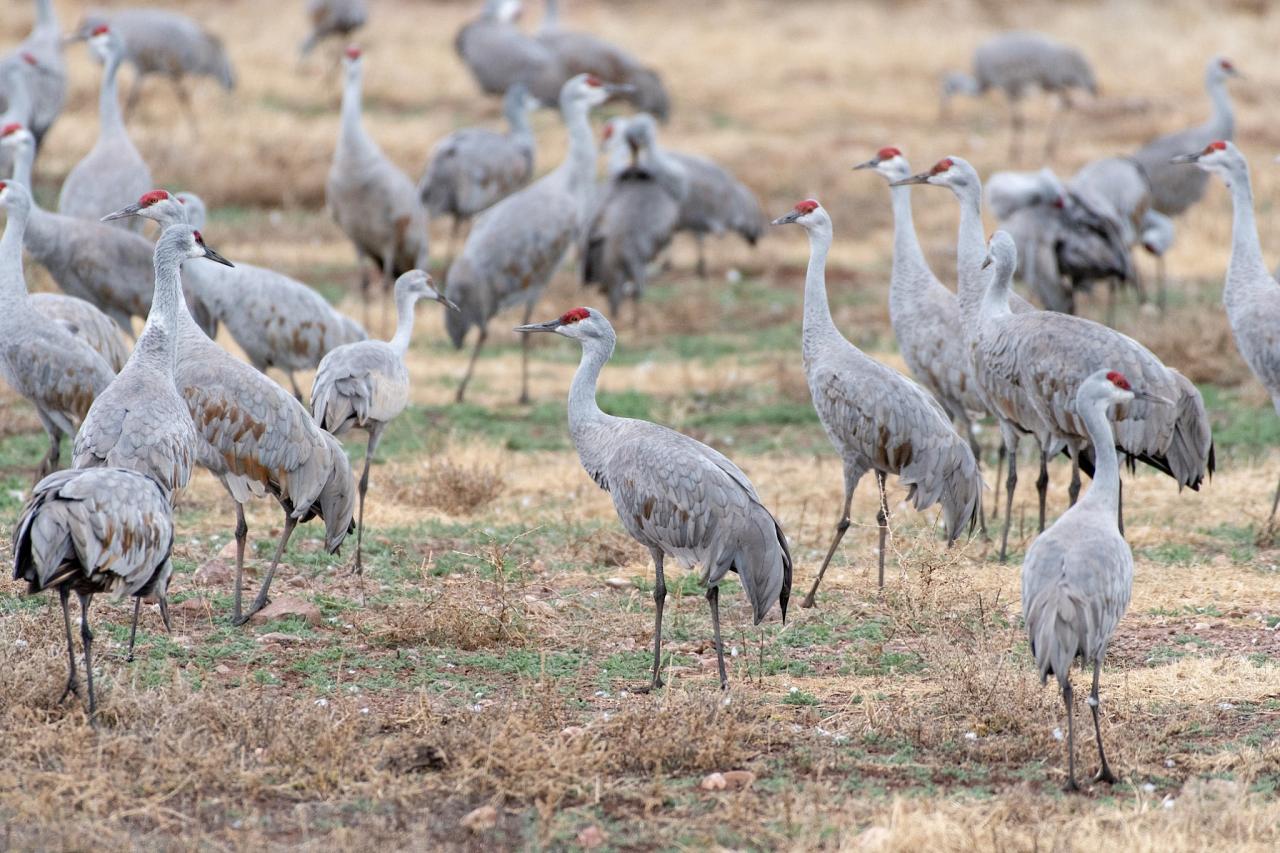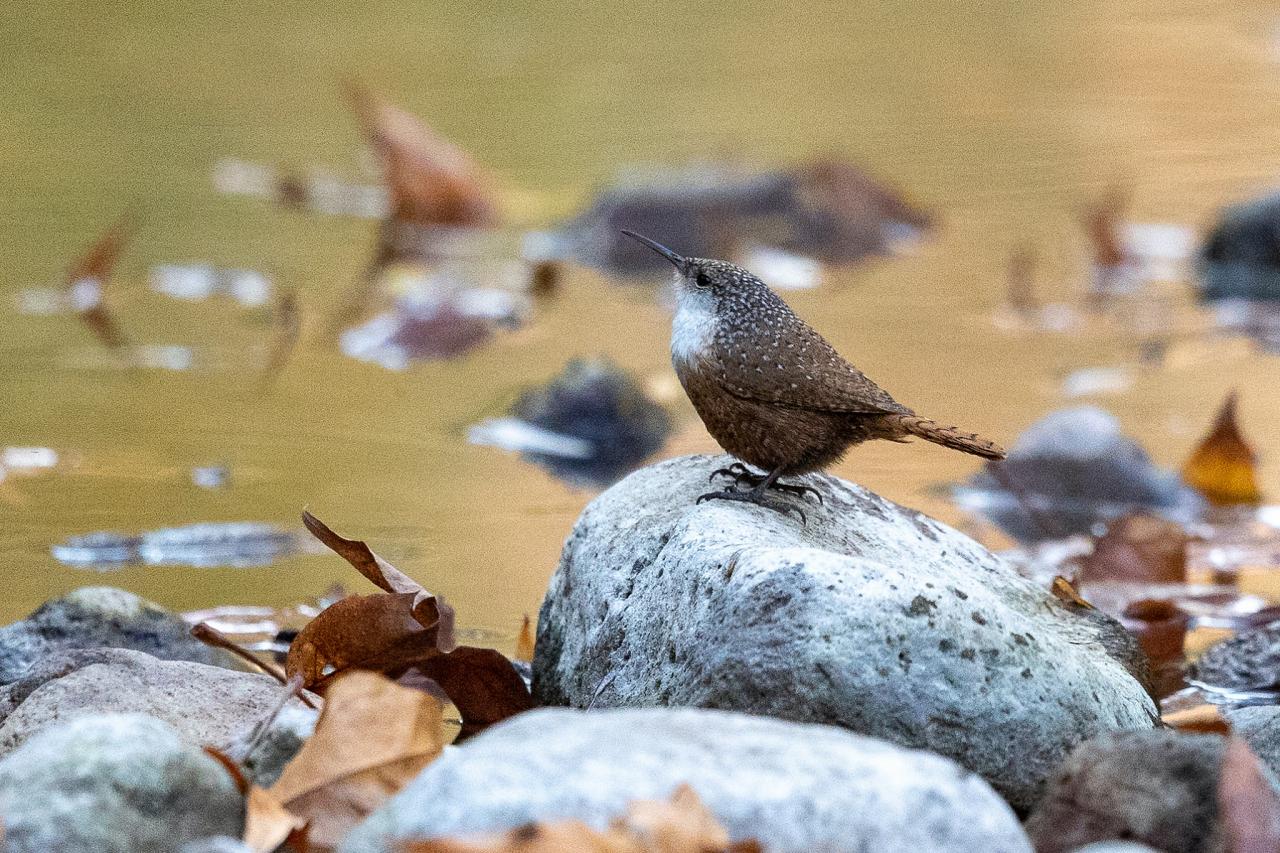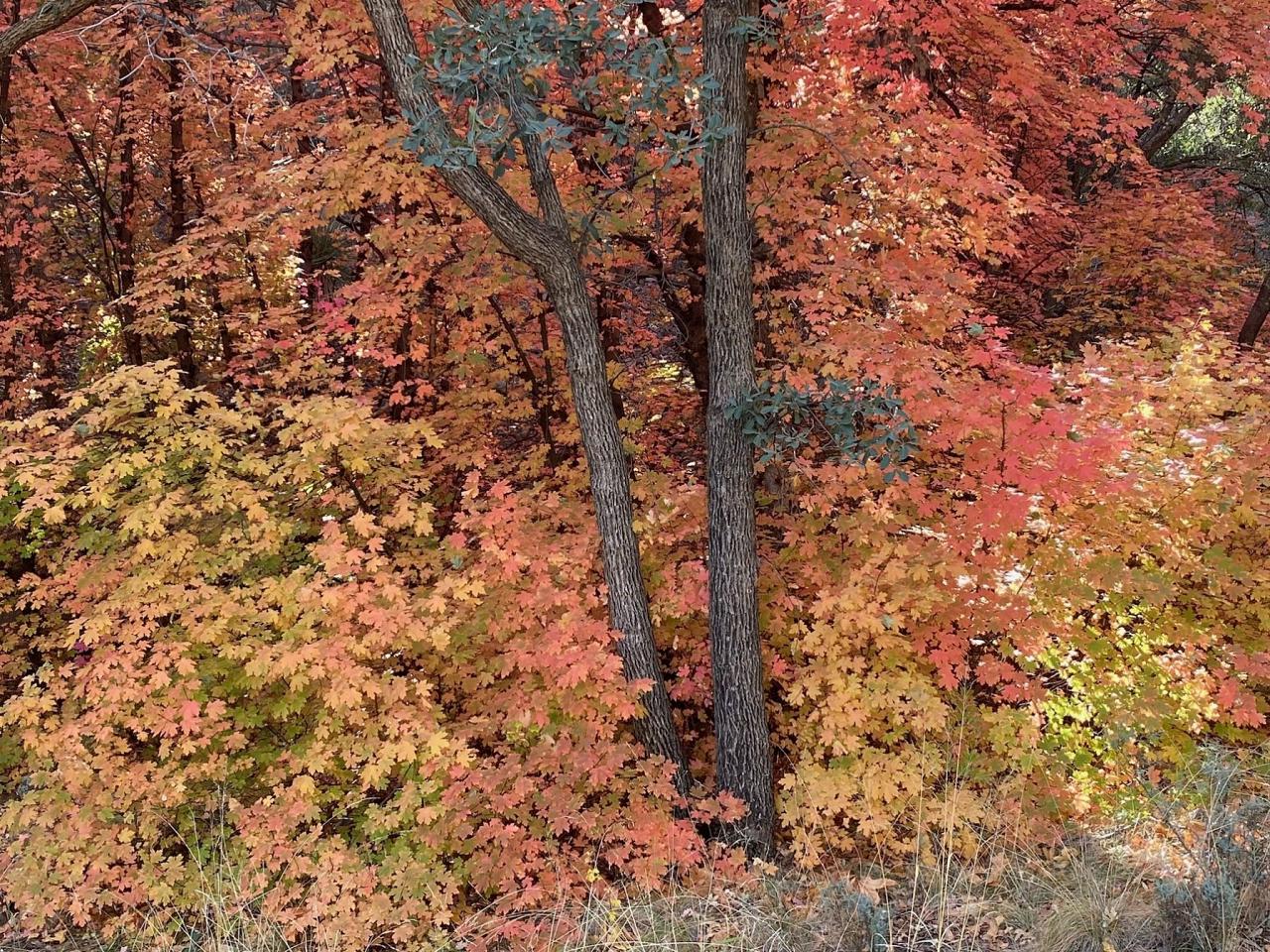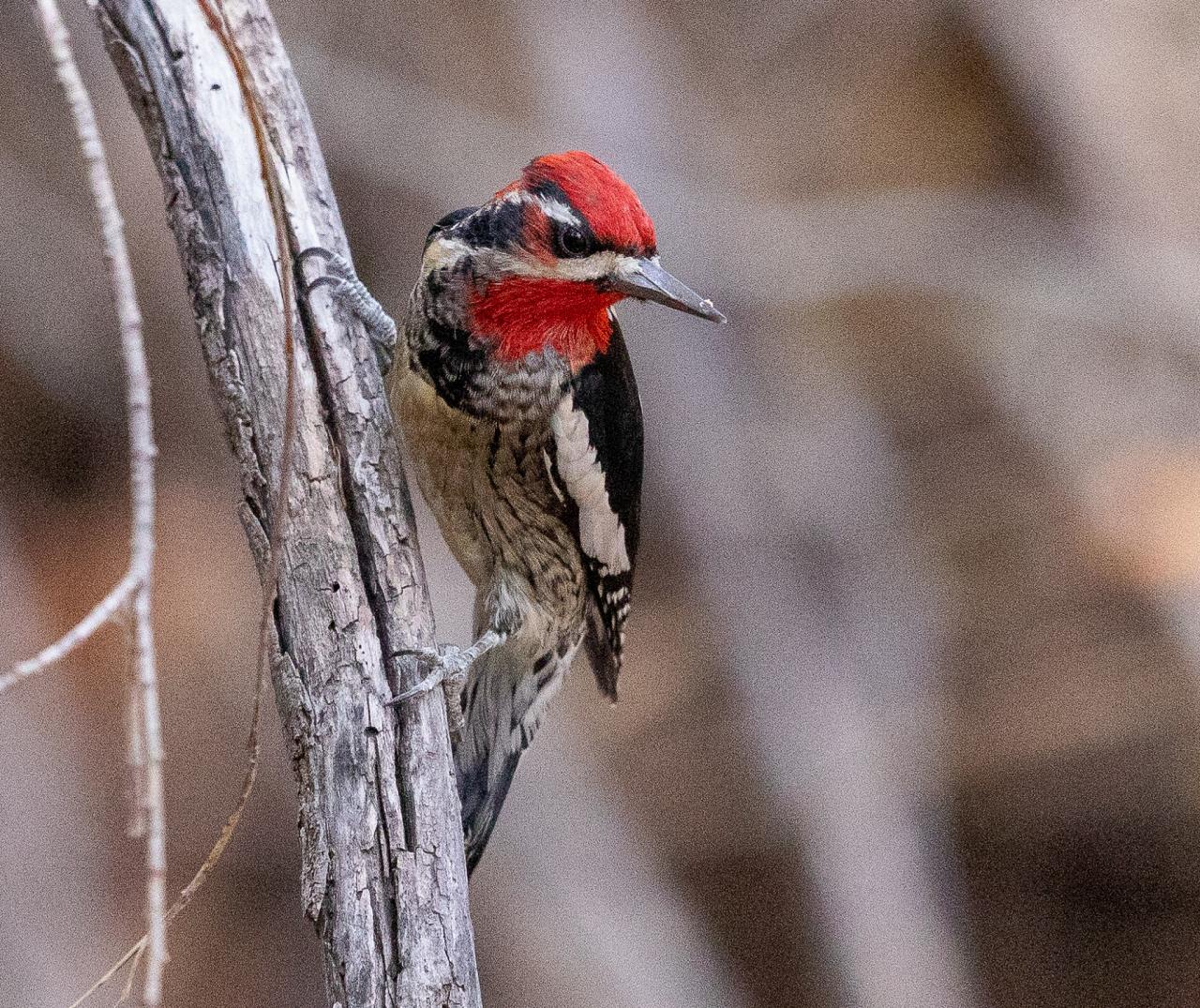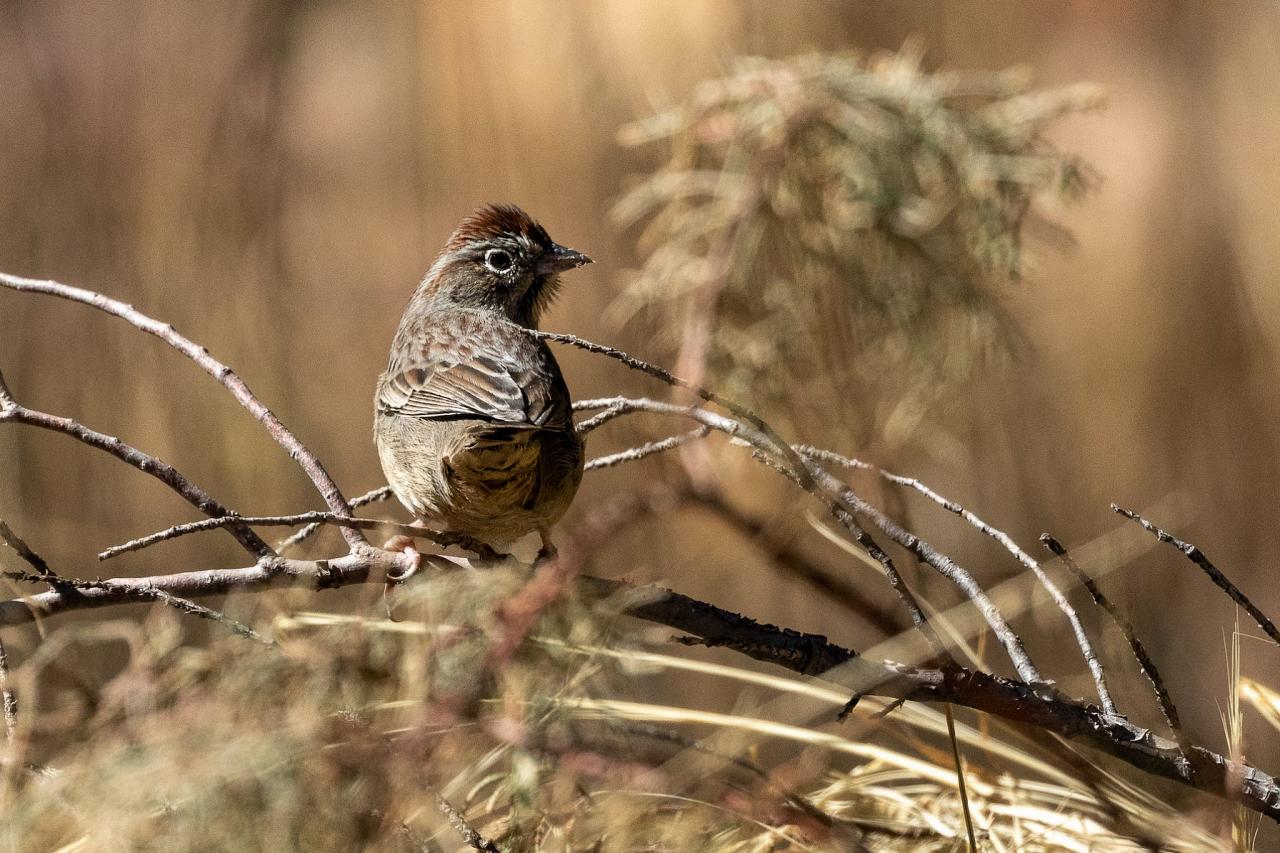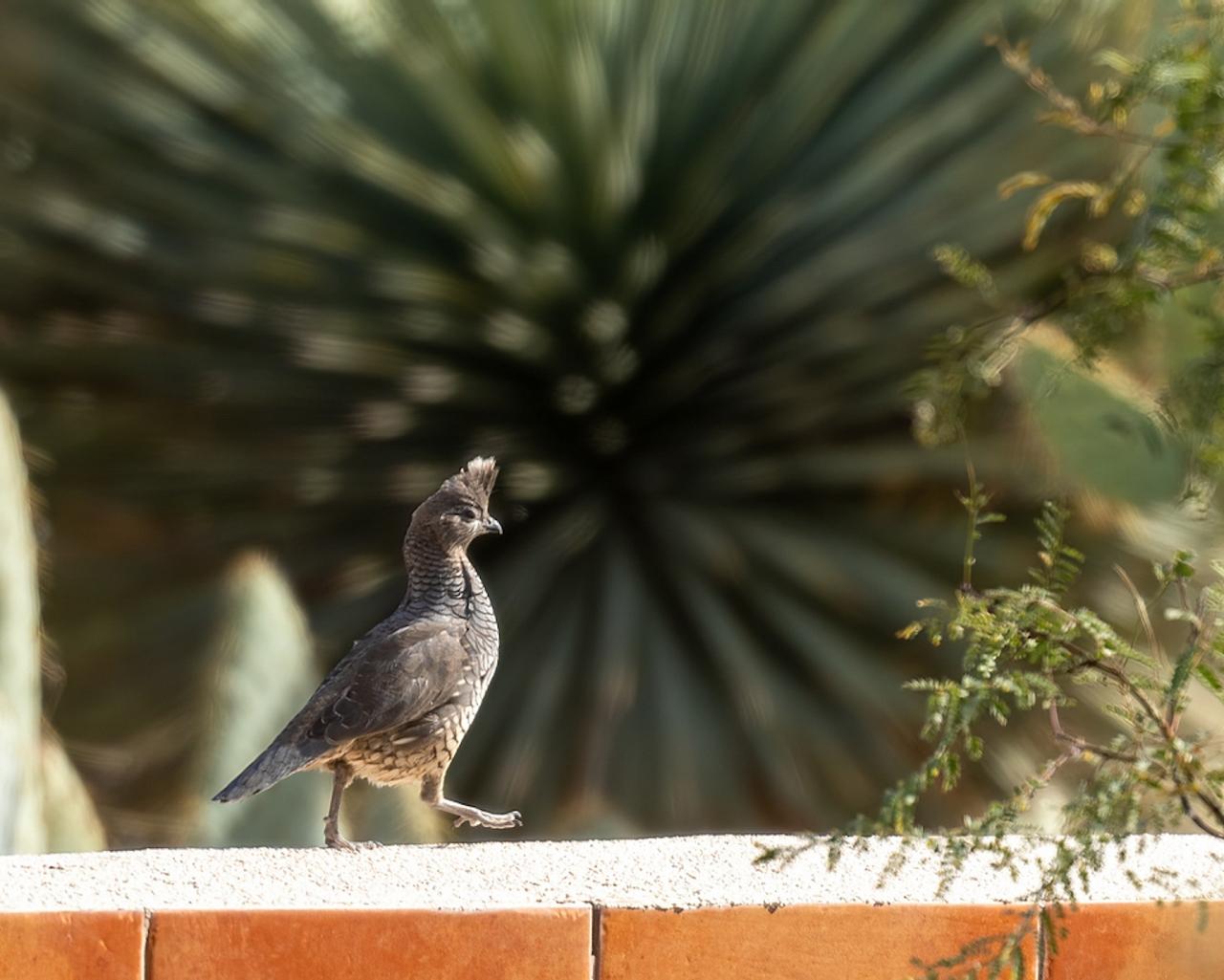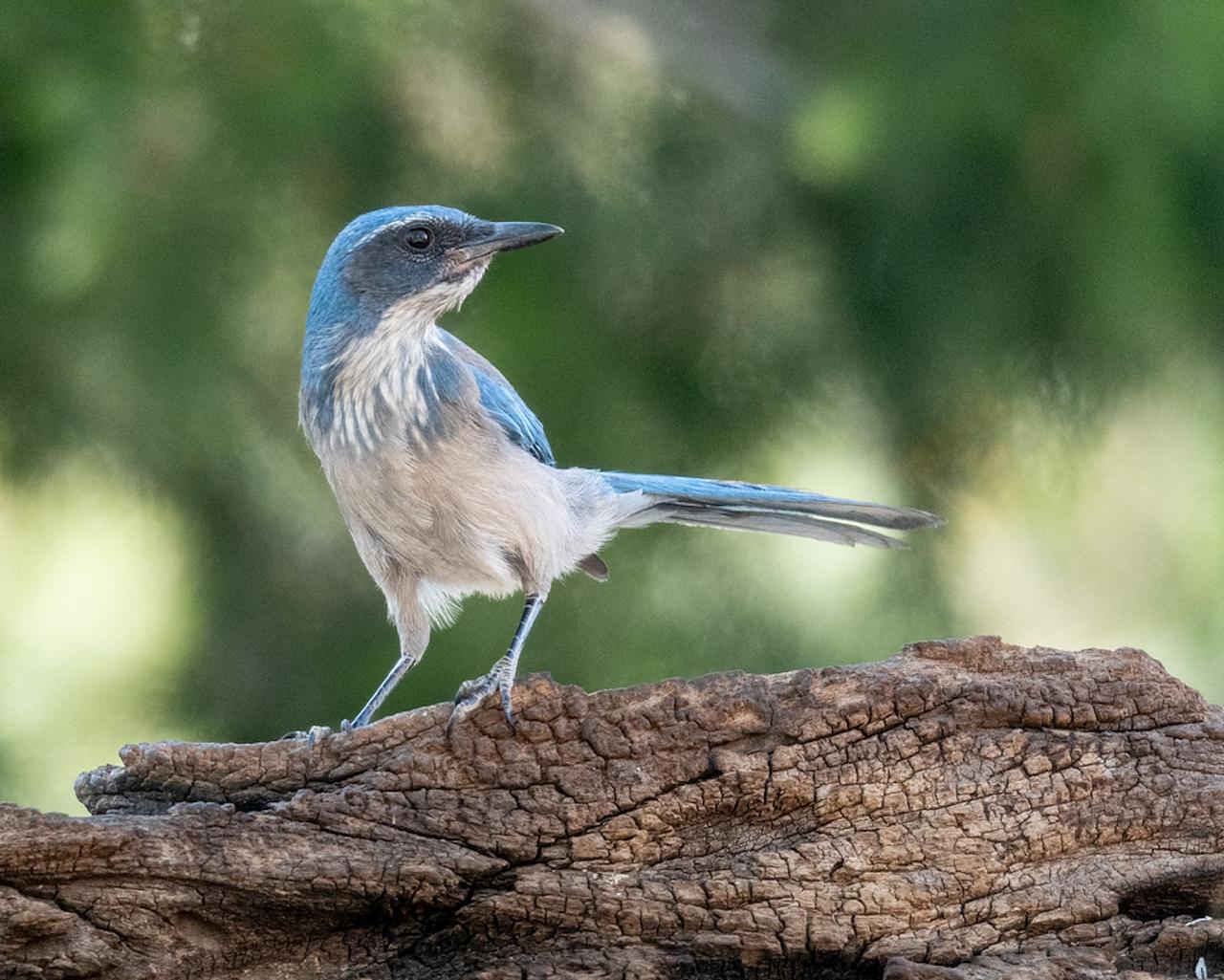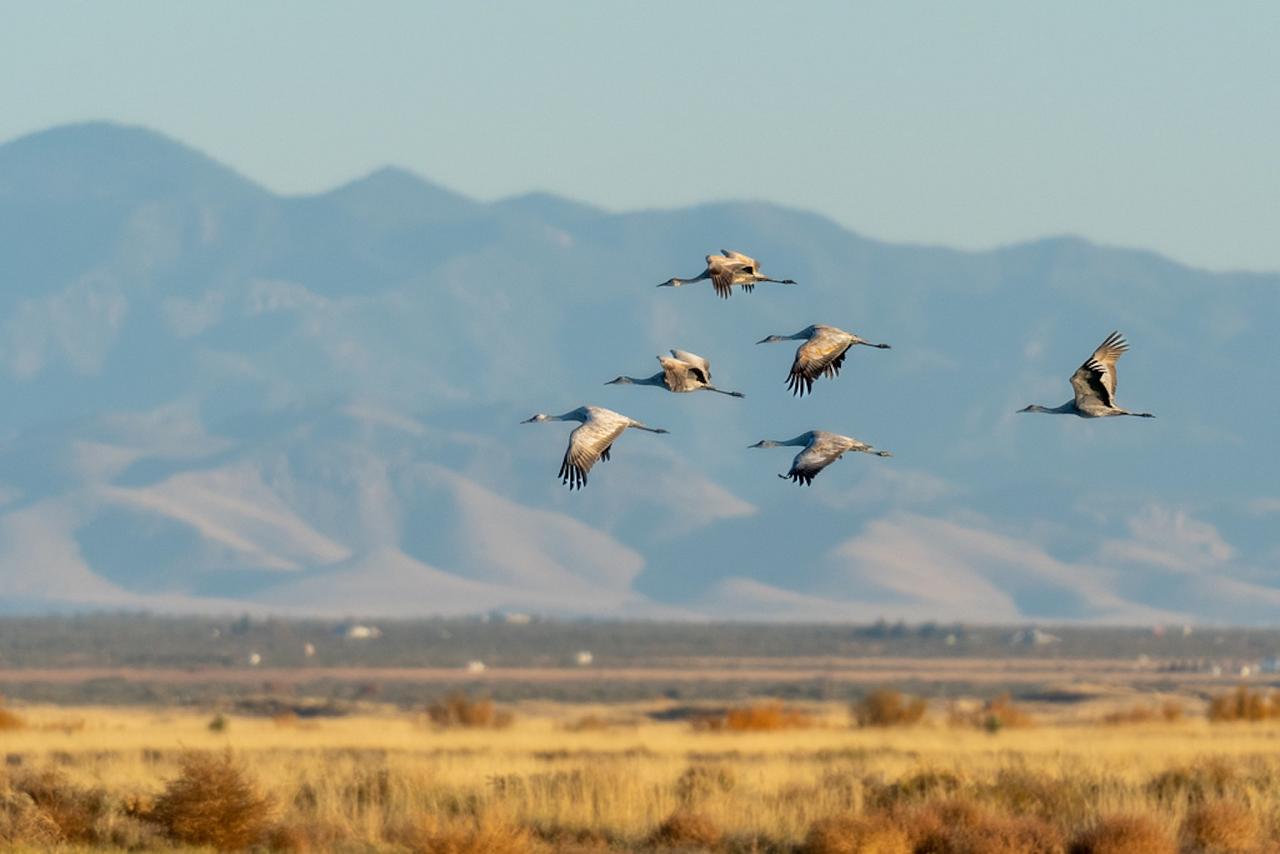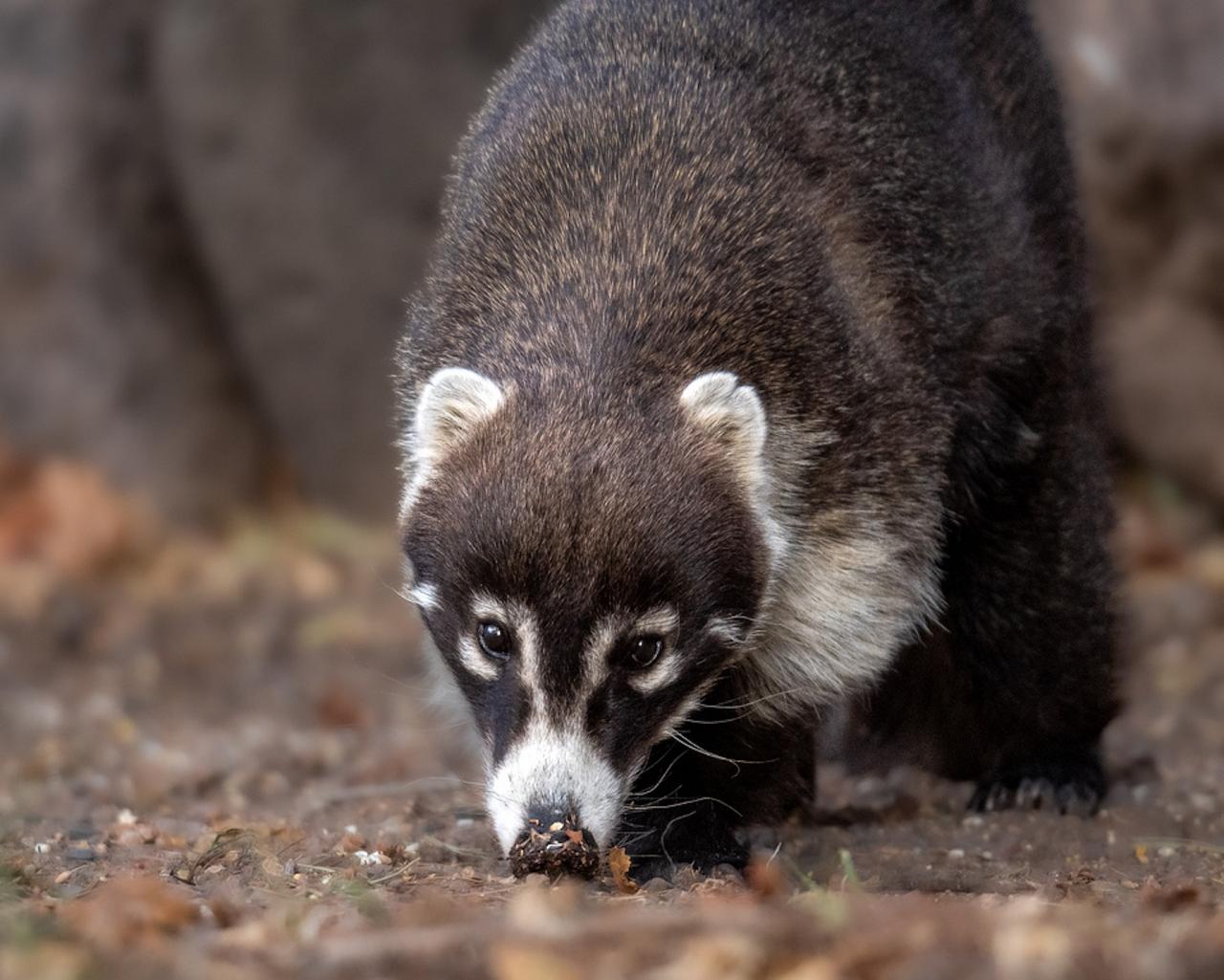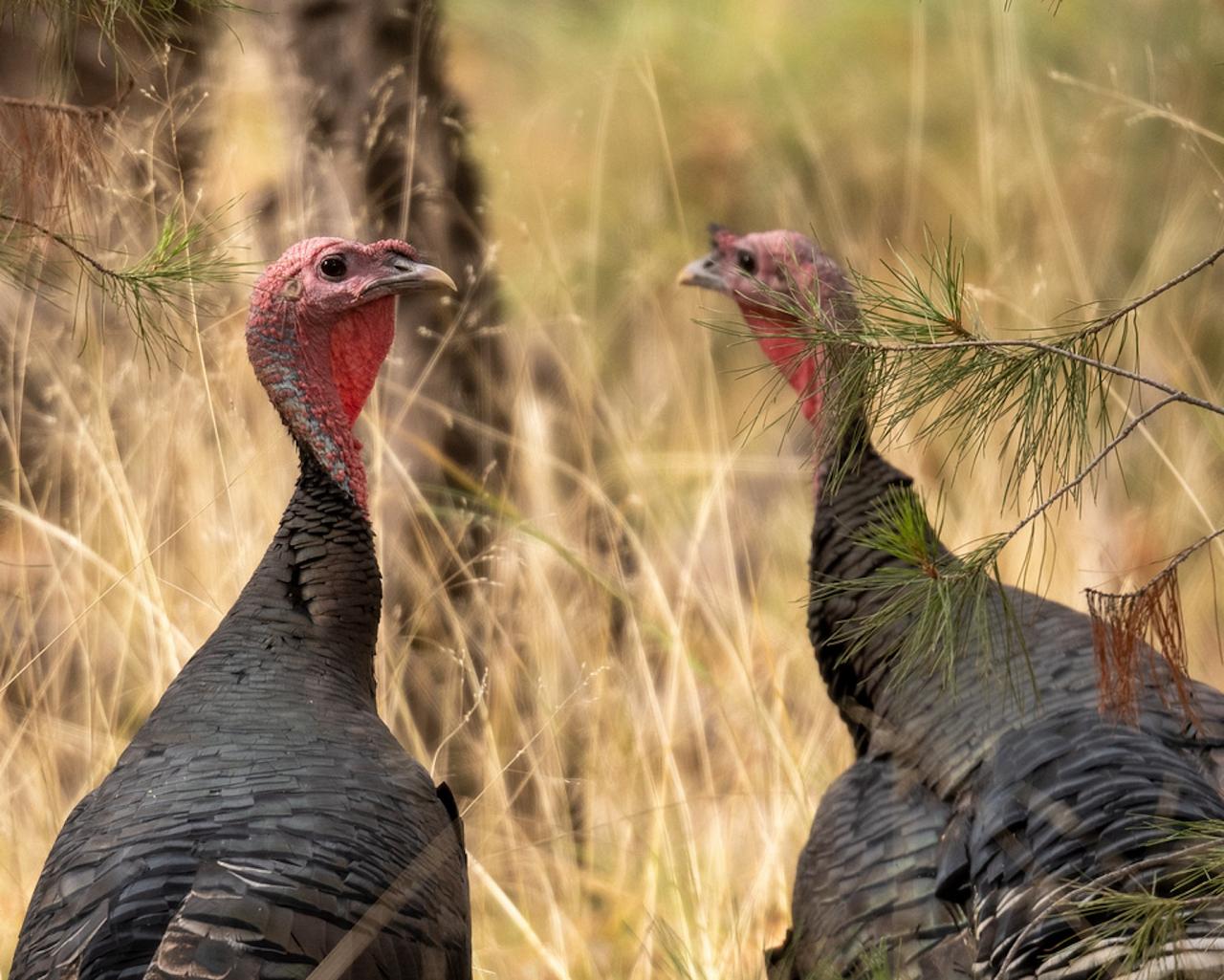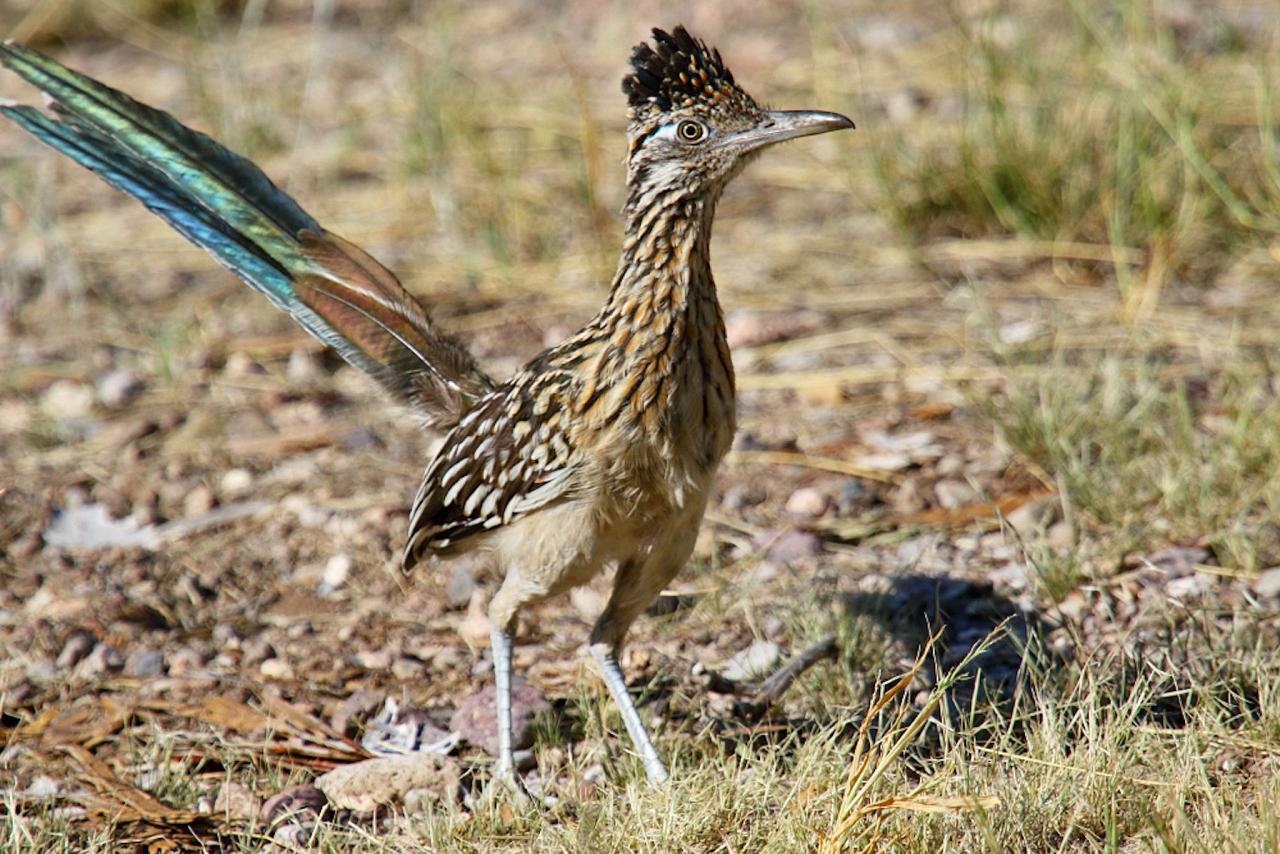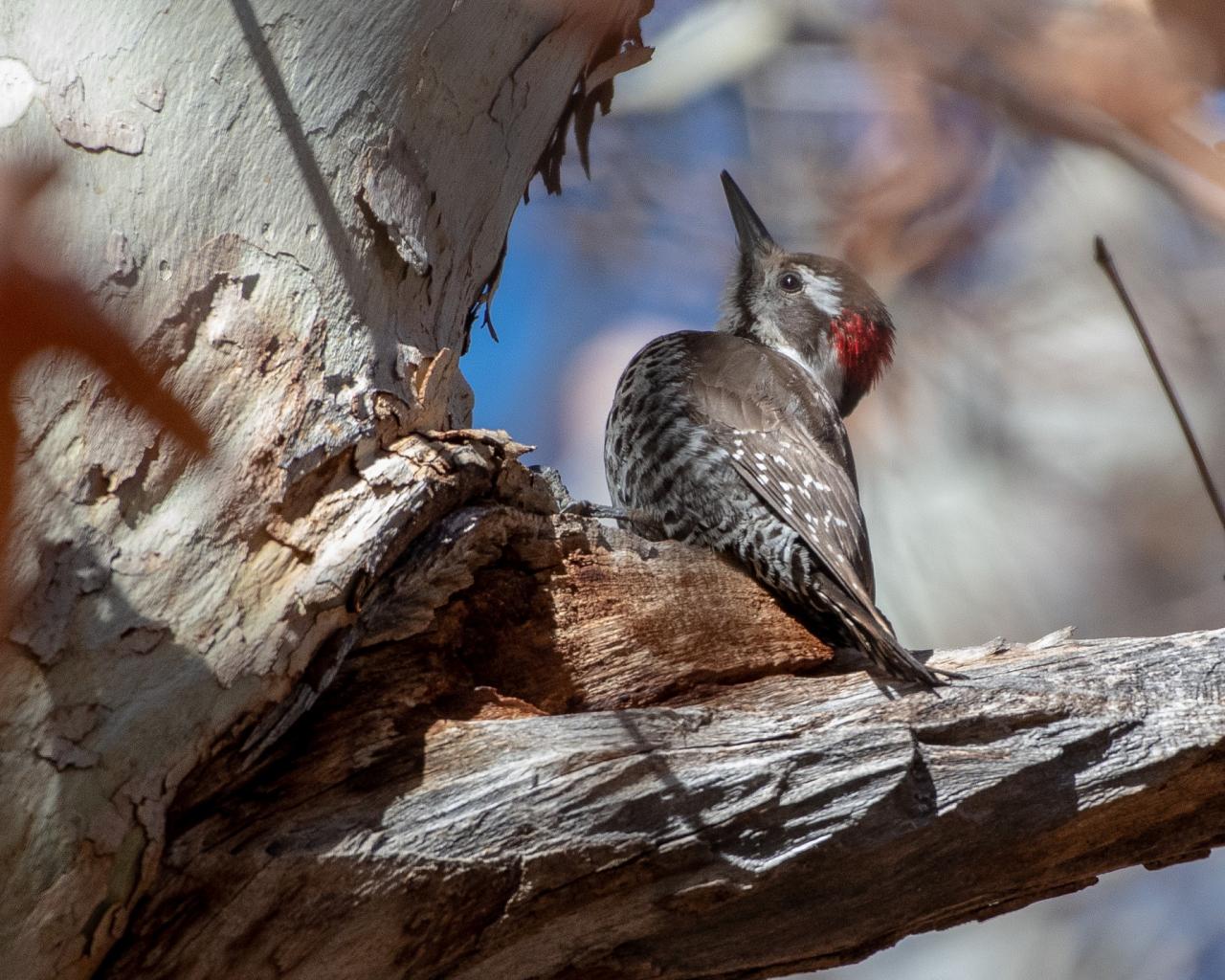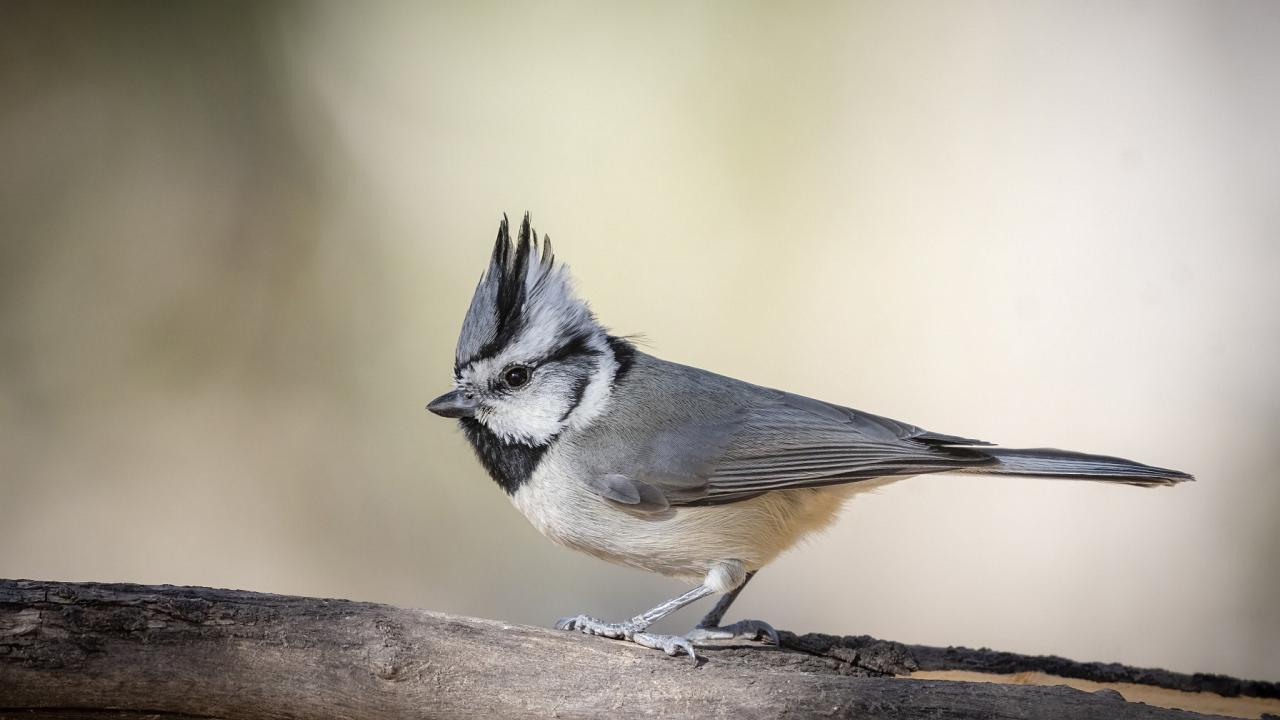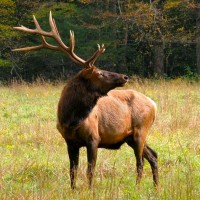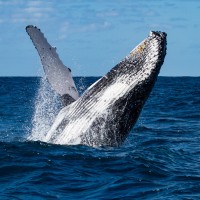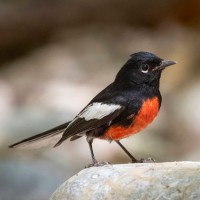- Overview
- Full Itinerary
- Photo Gallery
- Costing
- Travel Details
- Trip Reports
- Guides
- Map
- Know Before You Go
- Other Trips You May Like
Celebrate the turning of the year surrounded by sunshine, Sandhill Cranes, and the wide-open beauty of Southeast Arizona. This festive birding blitz takes you from the vast Willcox Playa to the lush San Pedro River and the saguaro-studded Sonoran Desert. Witness the unforgettable sight of thousands of cranes filling the sky at sunrise and sunset, and enjoy close looks at a dazzling variety of wintering ducks, sparrows, raptors, and desert specialties. With mild winter weather, breathtaking scenery, and joyful birding from start to finish, this tour is the perfect way to close one year’s bird list—and launch the next in spectacular fashion.
From touchdown in Tucson to your final farewell, this trip is all about great birds, good company, and fun in the field. Local expert guides Peg and James lead the way through Southeast Arizona’s most celebrated hotspots—Whitewater Draw, Patagonia Lake, Ash Canyon, Ramsey Canyon, and more—each teeming with birdlife. Ring in the New Year at the cozy Casa de San Pedro with a festive dinner and their famous pie, then start January 1 with Vermilion Flycatcher and hummingbirds right outside your door. By the time you head home, you have an impressive species list, warm memories of desert sunsets and crane-filled skies, and the perfect head start on another year of birding.
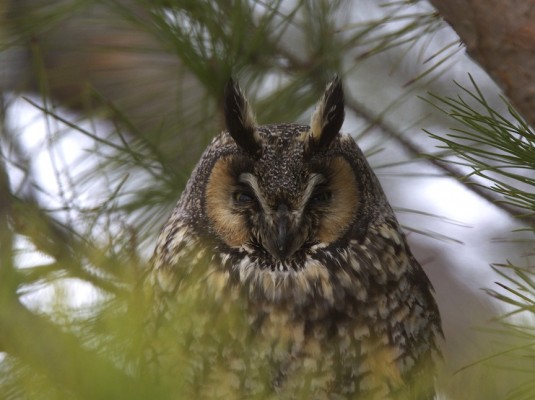
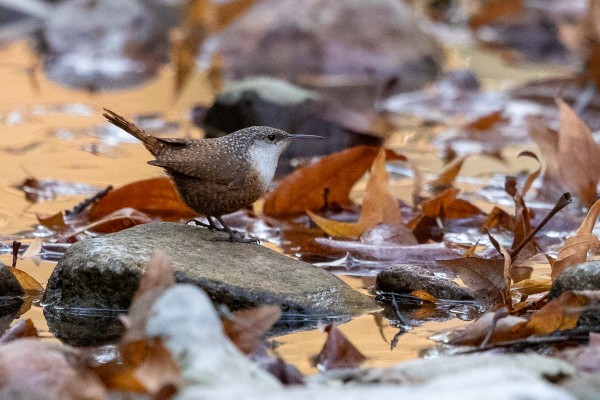
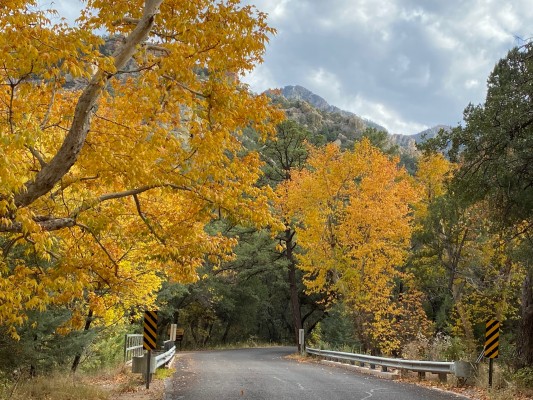
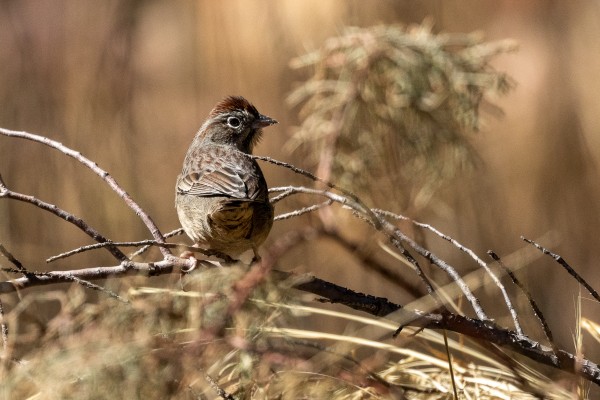
- “A scenic and birdy venture to southern Arizona. The sky island terrain is unique and it's a great time of year for the trip.” — Paul Pilch, 2023 Traveler
- “An excellent trip! Great pace with options for hikes along with ample birding in a wide variety of environments. Food and lodging were great along with the trip leaders.” — Sandra Kemper, 2023 Traveler
- “I have done nine Naturalist Journey's trips and this is one of my favorites. I loved the landscape and birds. It was a great group and the places we stayed facilitated the group with catered meals and gathering space rather than all restaurants.” — 2023 Traveler
- “This was such a great trip. I had no idea what to expect in SE Arizona and it was marvelous. This is a good time of year to visit because the weather and trees were perfect.” — 2023 Traveler
Tour Highlights
- Start and end your birding year with birding FUN!
- Enjoy sunshine, saguaros, and an spectacle of cranes
- Experience a Southeast Arizona birding blitz with a holiday celebration
- Savor a special New Year’s dinner and New Year’s Day brunch at the Casa de San Pedro
- Build your skills! Learn to ID those sparrows and raptors
- Jump start your 2026 eBird list and learn some new eBird skills
- Don’t miss out! With eBird, everything January 1 starts anew
- Peg Abbott, James Petersen, and Vernie Aikins welcome you!
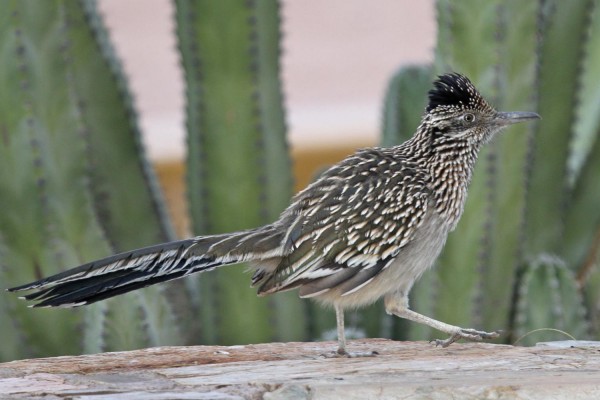
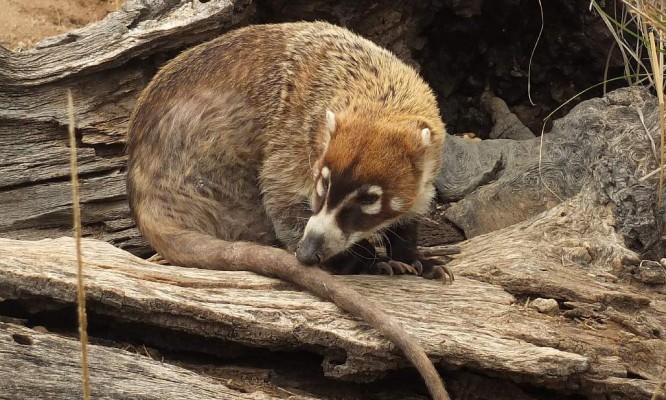
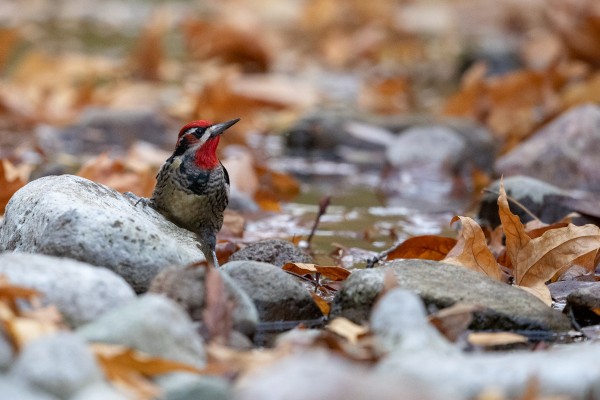
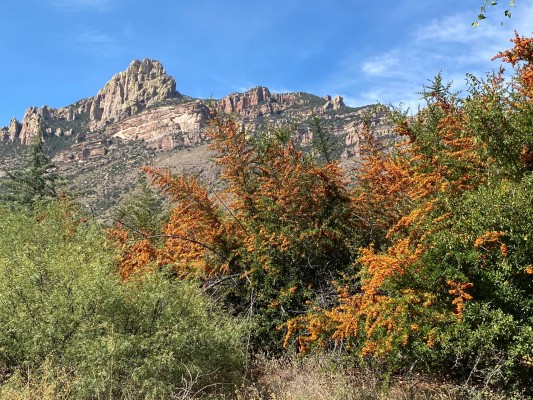
Trip Itinerary
Itineraries are guidelines; variations in itinerary may occur to account for weather, road conditions, closures, etc. and to maximize your experience.
Tues., Dec 29 Willcox Playa | Lake Cochise
It's time to prepare for another trip around the sun, and with that, time to wrap up our end-of-the-year bird lists. Add some birding joy to top off those lists and start the year brand new. What better way to do that than with a trip to the Sonoran Desert and southeastern Arizona—a place where species abound year-round and winter weather is perfect to be out in the field!
This is a fun and go for it birding tour. Right from the airport, departing by 1:00 PM (please arrive by 12:30), we are on the road and ready to bird. We start the 1.5-hour journey east of Tucson, stopping at some ponds in Benson, then aiming toward the town of Willcox, where we stay for two nights to be close to the action. Water and wetlands are bird magnets for many species in this season and central to the needs of charismatic Sandhill Crane that fill the sky as they fly back and forth from Lake Cochise to the nearby agricultural fields. At sunrise and sunset the spectacle is memorable, a cacophony of sound and a light show of birds flying against purple mountains and pink skies. Over a dozen species of duck and tiny Eared Grebe make Southern Arizona home for the winter. Wintering waterfowl, Chihuahuan Raven, and Scaled Quail should help us round out our species lists for the year.
Your guides, Peg and James, both reside in Cochise County, so they are keenly aware of what species are where, making our time enjoyable and efficient for finding a lot of species. After leaving Benson, we head to the Willcox Twin Lakes ponds to watch Sandhill Crane swirl down to their night roost by the lake. Nightfall comes early at this time of year, so we plan to check in to our lodgings after the sunset glow fades, no later than 6:00 PM. Then, enjoy dinner with a western flair at a favorite local restaurant.
Accommodations at the Arizona Sunset Inn & Suites, Willcox (D)
Wed., Dec 30 Lake Cochise | Sulphur Springs Valley
As we are so close, there is an optional run over to the ponds this morning for those that wish to watch and photograph the sunrise spectacle. By birding standards it’s not that early, sunrise is about 7:30 AM. Our hotel has a nice breakfast to refuel ourselves before setting out for the day.
Depending on sightings, we may go north to several ponds in the Safford area that attract unusual ducks and geese. We then return to explore the northern section of Sulphur Springs Valley, famous among Arizona birders for wintering longspurs, possible Mountain Plover, and a variety of raptors and sparrows. This region has an abundance of agricultural fields, which are perfect for cruising. Lark Bunting favor these lowland fields, and we can find huge flocks of them as we explore the area. Another all-star bird everyone wants on the list for the year, Ferruginous Hawk, frequents this area as well, so we are on the lookout for this large Buteo. Vesper Sparrow, Horned Lark, and Greater Roadrunner are also possibilities before the first day of birding is a wrap.
Throughout the week we keep our lunch plan flexible; if the weather is gorgeous we can picnic, if it’s blustery we dip into some colorful small town cafes.
As we return to the hotel we do another check of the playa, with scopes checking for any new species. This water at the Twin Lakes Ponds, sitting in the middle of the vast Willcox Playa, is a wonderful migrant trap—perfect for filling out your list, as the species can rotate out daily. The lake should be teeming with Northern Shoveler, American Wigeon, and Ruddy Duck, dispersed in with Cinnamon Teal, Canvasback, and Green-winged Teal, all perfect for pumping up our end-of-the-year lists. Lake Cochise is also the perfect setting for winter shorebirds like Long-billed Dowitcher and Least Sandpiper.
Our hotel is close if you want to be dropped off for a break, or listen to the music of cranes once again, each sunset viewing session is different! As we bring our second day to a close in Willcox, we set some time aside for one more evening at Lake Cochise in the hopes of a postcard-worthy sunset with the Sandhill Cranes.
Accommodations at the Arizona Sunset Inn & Suites, Willcox (B,L,D)
Thurs., Dec 31 Whitewater Draw | San Pedro River | New Year Celebration
It’s New Year's Eve! Before the festivities tonight at the Casa de San Pedro, we have one more full day to boost those year lists. After breakfast at the hotel, we make our way south across the Sulphur Springs Valley, taking in a different part of the valley while watching utility poles for our last Prairie or Peregrine Falcon of the year. We cross desert scrub in search of Bendire’s Thrasher and Chihuahuan Meadowlark, possible year lifers for a lot of the group. After that, we arrive at Whitewater Draw, one of the best winter birding spots in all of Arizona.
An easy, level walk around the dikes at Whitewater Draw greets us with thousands of Sandhill Crane, Snow and Ross’s Geese, and an assortment of other waterfowl. They often return to rest mid-day, then go back into farm fields to feed, so every visit here gives us a different experience. Whitewater is also a great place for sparrows, even possibly producing Sagebrush Sparrow for our continuing list. Vesper, Savannah, Song, Lincoln, White-crowned, Brewer’s, and Black-throated all should be present here.
Our lunch plan stays flexible to field time, but by mid-afternoon, we make a stop in the historic mining town of Bisbee. Founded in 1880, this town is one of the most unique places in Arizona. Enjoy a coffee at the local roaster, a brew at the local pub, or stroll up the streets to find yourself a year-end treat. There is also an excellent, Smithsonian-affiliated museum here in town. We turn you loose, then regroup to drive a short way over to the San Pedro River, and our all-time favorite lodge, the Casa de San Pedro, your home for the next two nights. The owners of the Casa de San Pedro treat us to a spectacular holiday feast for the New Year’s celebration.
With the short hours of daylight, feeder watching or a short walk to the river close out our final birdable hours of the year! Three species of towhee are possible here—Abert’s, Canyon, and Green-tailed can all be found here in the winter. Ladder-backed Woodpecker work the trees and Common Yellowthroat work the edge of the small pond and river. As we make our way back to the lodge, we stop at the hummingbird feeders to take in what could possibly be our last bird for the year—the brightly-colored Broad-billed Hummingbird.
Dinner and festivities are provided by the Casa de San Pedro. We ring in the new year with their famous and endless pie, enjoying each other's company, and recounting our most memorable bird encounters of the year.
Accommodations at the Casa San Pedro (B,L,D)
Fri., Jan 1 Casa San Pedro | Ramsey Canyon | Ash Canyon Bird Sanctuary
Today we say good morning, welcome to a new year, and hello to a fresh new bird list for the year. The fun starts all over again! Every sparrow, egret, duck, and warbler all need to be found again and added to our fresh new list. We have a plan to have everyone leaving with a rocketing start to the new year and 100 species of birds before you get on our flights back home, and we have three days to do it.
The morning starts with a walk along the San Pedro River and its towering cottonwoods, right out the door from your room. Potentially, the first bird of the year is a Gambel’s Quail strolling through the courtyard, or possibly an Anna’s Hummingbird coming in for its morning nectar from the feeders. Vermilion Flycatcher and Curve-billed Thrasher greet us in the grasslands adjacent to the Casa de San Pedro. The cooing of the Inca Dove rounds out our first hour of birding in the new year, all before another wonderful brunch at the Casa.
After breakfast we head out, first making our way to The Nature Conservancy property, Ramsey Canyon. Known as one of the most diverse canyons in Arizona, we hope for some more wintering hummingbirds such as the Blue-throated Mountain-gem, and sometimes the occasional Broad-tailed will stick around. Ramsey Canyon can even produce overwintering Coppery-tailed Trogon, so it’s a must-stop as we march our way towards 100 new species for the year. Lastly, at Ramsey Canyon, we see how many woodpeckers we can find this morning. Ramsey can be a favorite for Acorn, Gila, Ladder-backed, Arizona, and Hairy Woodpecker, as well as Red-naped Sapsucker. Not a bad way to start our first day.
After Ramsey Canyon, we evaluate what species we’ve already seen for the day and adjust from there. We have a plethora of options from canyons to river walks. We keep the itinerary loose after the morning, and let the birds dictate where we go next. And we choose a fun lunch spot accordingly.
We plan to cap off the day with a visit to Ash Canyon Bird Sanctuary. An afternoon spent sitting amongst the serene gardens of Ash Canyon is the perfect way to cap off our whirlwind first day of the year. Many of our local guides consider this sanctuary to be one of their favorite places to just sit, unwind, and take in the majesty of the bird world. The evening ends with groups of Mexican Jay coming in for their last meal of the day, Bridled Titmouse scurrying around the trees, and the almost familiar call of Pyrrhuloxia (Desert Cardinal).
Accommodations at the Casa San Pedro (B,L,D)
Sat., Jan 2 Sonoran Desert
With an abundance of new birds on day one, it's time to change habitats and start making our way to the classic Saguaro Cactus Sonoran Desert landscape this area is known for. It’s only day two of the new year, though, and we have an exciting list of possibilities to work on—expect this to be our most full day! We have a plethora of great birding spots to hit along the way and are sure to take “the long way” back to Tucson. Our first stop of the morning is the grasslands of Las Cienegas Nature Conservation Area. Along with a large assortment of wintering sparrows that are prizes for our new year list, American Kestrel thrive in this habitat, as do Northern Harrier.
After time at a few strategic waterholes in the grasslands, we continue west to one of the birding capitals of Arizona, the town of Patagonia. This is home to the Paton’s Center for Hummingbirds, and is a great place to quickly boost our observations. Inca and Common Ground Doves frequent the yard year round. Lazuli Bunting and Green-tailed Towhee also like to call this hotspot home for the winter, as well as multiple flycatcher species. The true gem of the center, though, is the Violet-crowned Hummingbird. Most years, males overwinter here. What a special bird to already have on our list for the year! Some years, oddities like Rufous-backed Robin can be found here and we pay close attention to any New Year surprise sightings.
Once we have had our fill of Violet-Crowned Hummingbird, we keep moving like geese in a v-formation down the road. Patagonia Lake is up next, and we want to make sure we get there with plenty of time. This is the #1 winter hotspot in Arizona, and it’s the perfect place to boost our numbers and try out our ID skills on a great variety of species. With scopes and our guides’ knowledge of where specialties can be found, we could rack up more than 15 species of waterfowl with this stop. From the tiny Eared and Pied-billed Grebes to the more massive “tanks” like Common Mergansers, and in some years Common Loons, Patagonia Lake is a true gem. It's also a great migrant trap, so we never know if we might pick up a Neotropic Cormorant or a California Gull. It’s also not impossible to pick up five or more flycatcher species here in the winter.
The exciting thing is that we have not even made it back to Tucson, yet, and still have more birding to do along the way. As we round the southern edge of the Santa Rita Mountains, we find ourselves in the Santa Cruz Corridor. In the spring, this is a flyway for migrating birds. But in the winter, it’s also home to many other species. From here, as we make our way north, following the same route as the conquistadors in the 1700, we leave the birding in the guides’ hands. There are an abundance of stops along the Santa Cruz River, such as ponds, waste water treatment plants, and historical parks to keep us busy for days. But your Naturalist Journeys guides find just the right spots to fill in the blanks as time allows, as we make our way to Tucson.
Accommodations at Lodge on the Desert (B,L,D)
Sun., Jan 3 Sonoran Desert | Tucson
Today is a terrific full day planned to feature the sunny Sonoran Desert, another full day to work on our kick-start year lists before we all head our separate ways. Today we make sure we take full advantage of our time. Tucson and the surrounding area is full of special places to bird.
Tucson is book-ended by the Saguaro National Park West & East. This true Sonoran Desert habitat is ideal for a few species we have probably not yet encountered thus far on the trip. Gilded Flicker call the towering Saguaro cactus home, and Rufous-Winged Sparrow thrive in this area with their bouncing call. The Saguaro landscape is also home to Black-tailed Gnatcatcher, as well as an abundance of Black-throated Sparrow, which we may have not yet encountered. Driving through the National Park, seeing the Saguaro forests stretch for miles, is a treat unto itself. But stopping to listen and observe a Cactus Wren calling from atop its Cholla Cactus is a great way to harken in this new year.
Interspersed across the Tucson valley, we also have several wonderful wetlands. These are very important to the exceptional diversity Tucson is known for, and are vital as our bird list climbs with each passing hour. Sweetwater Wetlands and El Rio Preserve both provide great habitat for wintering birds. We may still be on the lookout for Blue-winged Teal, Canvasback, or wintering Yellow Warbler. One of the wetlands should provide them for us. These are also great spots for any wintering swallows that may be around, possibly our first for the new year.
Beyond the city, past the mountains, below even where most the Saguaros live, Tucson has an expansive lowlands area called the Avra Valley, filled with farmlands and vast systems of aqueduct recharge basins. Out in these lowlands, some of the facilities allow bird watchers to access them. In the winter, this can be great for desert shore birding (possibly an oxymoron, but definitely a productive activity when boosting our new year list). Long-billed Dowitcher, Greater Yellowlegs, and Wilson’s Snipe congregate in this area. Avra Valley can host year-round Crested Caracara, Prairie Falcon, and maybe even a Merlin.
As time allows, we visit a few of the slew of parks throughout Tucson. From native desert-landscaped parks to pine-encircled ones, there is an extensive range of options for us to search right in town. Finding the parks with the winter fruiting trees can be a goldmine. A fruiting Chinaberry tree is a huge draw in many parks in town. Handfuls of Cedar Waxwing can be found feasting on these trees, as well as Western, and sometimes even Mountain, Bluebirds. Some pine-heavy parks are known to attract Red Crossbills in the winter as well. Local parks can also be a great source for Cassin’s Kingbird or Greater Pewee that like to stay for the winter.
Finishing our final day in Tucson is by design. Surrounded by so many varying habitats, parks, wetlands, and farm fields, it really helps us finish strong on our birding blitz to start the new year.
It’s also a fun place to celebrate our New Year blitz and we are sure to pick a great local restaurant to recount our trip highlights and favorite species over dinner.
Accommodations at Lodge on the Desert (B,L,D)
Mon., Jan 4 Departures
Departures should be scheduled for after 1:00 PM today. This gives us a few hours of birding in one more local park near the hotel before it’s time to fly out. We depart with a lengthy new bird list for the year, a heart full of joy from all the magnificent birds we’ve seen, and a head start on another joyous year of birding. Some of you may want to stay on in the sunny southwest to enjoy more time in the sun. We can offer suggestions; Tucson has a great mix of nature and culture close at hand. (B)
Cost of the Journey
Cost is per person, based on occupancy: $TBD from Tucson, AZ.
The cost includes: accommodations for seven nights, meals as specified in the itinerary (B=breakfast, L=lunch and D=dinner), professional guide services, park and program entrance fees and miscellaneous program expenses.
The cost does not include: round-trip airfare to and from Tucson, items of a personal nature such as laundry, telephone, time in the photography blind if scheduled, drinks from the bar, or gratuities for luggage handling or personal services.
Travel Details
Please plan to make air travel plans only after the minimum group size has been met. We will send you a confirmation email as soon as the trip has been confirmed.
Arrival & Departure Airport: Tucson International Airport (TUS)
Arrival Information: Please plan flights to arrive by December 29, 2026 to land no later than 12:30 PM.
Departure Information: Please plan your flight after 1:00 PM on January 4, 2027.
If you wish to extend your stay in Tucson, you could use the below hotel recommendations or plan accordingly on your own.
Hotel Recommendations: IIf you want to relax and stay near the airport after arrival (we can pick you up at these hotels), we recommend: La Quinta Inn & Suites Tucson Airport (520) 573-3333. Does staying downtown and exploring the many shops and restaurants sound interesting? We would recommend: Home 2 Suites by Hilton (520) 274-7400 and The Leo Kent Hotel by Marriott (520) 549-5330. If you have a rental vehicle and plan on visiting Tohono Chul, a great hotel in that area is La Posada. There are many restaurants in this area as well. La Posada Lodge & Casitas (520) 492-6637
Travel Tip: If you want to arrive a day or two early, Tucson is a great city to explore. The world-renowned Arizona-Sonora Desert Museum is a fun place to spend part of a day with a zoo, natural history museum, and botanical gardens all in one location. Tohono Chul Botanical Gardens offers easy nature trails through a variety of gardens and Saguaro National Park is a great place to visit for scenery, hiking, and to see the iconic saguaro cactus. The downtown area, which is close to the University of Arizona campus, offers many restaurants and shops. Downtown Tucson is about 8 miles from the airport and can be reached by a taxi, Uber/Lyft, or renting a car. You will need to return to the airport by 1 pm on November 3 if you are not staying at an airport hotel.
Browse below for trip reports and species lists from past versions of this and other tours from this destination.
Arizona
- May 2012
- March 2016
- January 2019
- November 2019
- January 2020
- May 2021
- November 2021
- January 2022
- February 2022
- May 2022
- November 2022
- January 2023
- February 2023 (Sweetheart Birding)
- February 2023
- May 2023
- February 2024
- April 2024
- May 2024
- November 2024
- January 2025
- March 2025 (Raptor Round Up)
- April 2025
- May 2025
Monsoon Madness
- August 2012
- August 2014
- August 2016
- August 2017
- August 2018
- August 2019
- July 2021
- August 2021
- July 2022
- August 2022
- August 2023
- August 2024
- August 2025
Sunshine & Saguaros
- November 2023
- January 2024
- November 2024
-
Peg Abbott
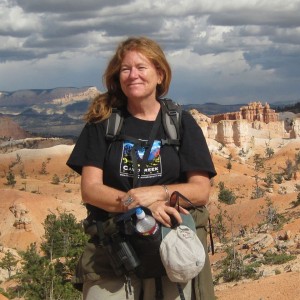
Peg Abbott is the owner and lead guide of Naturalist Journeys, LLC. She has been designing, guiding, and organizing natural history tours for more than 25 years, working for the National Audubon Society and other organizations before launching Naturalist Journeys, LLC in 1998. Her work has taken her from Alaska to Africa and Argentina, as well as many other locations around the world. She has conducted research on several bird and mammal species and keeps a close interest in Yellowstone and Mexican wolf reintroduction projects. Her interests include all aspects of natural history and geology. After 20 years in and around the Yellowstone area, Peg relocated in 2003 to the birding mecca of Portal, AZ.
Photo credit: Carol Simon
Other trips with Peg Abbott
-
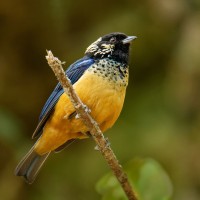 NEW! New Year at Tranquilo Bay FULL - See our Christmas Week at Trinidad's Asa Wright Nature Centre!December 30, 2025 - January 7, 2026, w/Mt. Totumas extension
NEW! New Year at Tranquilo Bay FULL - See our Christmas Week at Trinidad's Asa Wright Nature Centre!December 30, 2025 - January 7, 2026, w/Mt. Totumas extension -
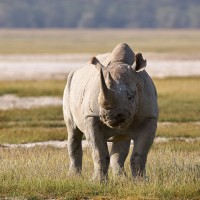 Tanzania: Wildlife & Birding Safari FULL - Ask us to put you on the list for 2027.February 9 - 22, 2026, w/Amboseli & Nairobi National Parks extension
Tanzania: Wildlife & Birding Safari FULL - Ask us to put you on the list for 2027.February 9 - 22, 2026, w/Amboseli & Nairobi National Parks extension -
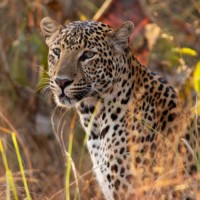 Big Cats & Breathtaking Birds of India FULL - Check out Island of Wonder: Birds & Nature of Sri Lanka!March 9 - 26, 2026, w/Pallas's Cat extension
Big Cats & Breathtaking Birds of India FULL - Check out Island of Wonder: Birds & Nature of Sri Lanka!March 9 - 26, 2026, w/Pallas's Cat extension -
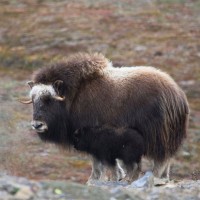 Nome Sweet Nome! FULL - Check out Alaska’s Northern Passages & Glacier Bay!May 28 - June 4, 2026
Nome Sweet Nome! FULL - Check out Alaska’s Northern Passages & Glacier Bay!May 28 - June 4, 2026 -
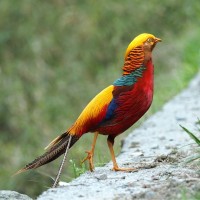 China’s Sichuan Basin & Tibetan Plateau FULL - Check out Thailand: Birding & Nature!June 11 - 26, 2026
China’s Sichuan Basin & Tibetan Plateau FULL - Check out Thailand: Birding & Nature!June 11 - 26, 2026 -
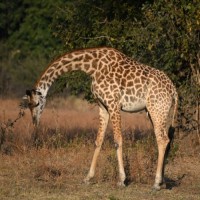 In-Depth & Incredible Africa: Botswana & Zambia Full! See our Enchanting Okavango tour in August.July 9 - 27, 2026
In-Depth & Incredible Africa: Botswana & Zambia Full! See our Enchanting Okavango tour in August.July 9 - 27, 2026 -
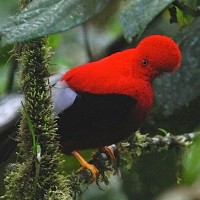 Peru: Cusco to Manú National Park A private tour for Tucson Bird Alliance - FULL!October 2 - 17, 2026, w/Machu Picchu extension
Peru: Cusco to Manú National Park A private tour for Tucson Bird Alliance - FULL!October 2 - 17, 2026, w/Machu Picchu extension -
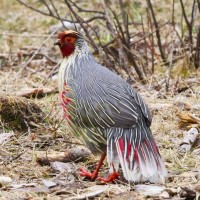 Biodiverse Bhutan: Birds, Mammals & BeyondNovember 6 - 21, 2026, w/Panna Tiger Reserve extension
Biodiverse Bhutan: Birds, Mammals & BeyondNovember 6 - 21, 2026, w/Panna Tiger Reserve extension
-
-
James Petersen
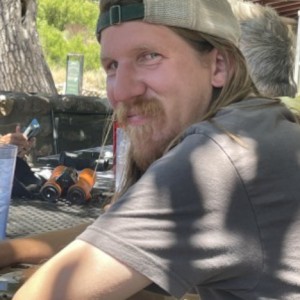
James grew up in New Jersey and started birding at a young age. He continued that passion by getting an undergraduate degree in Wildlife Ecology from the University of Maine. Since then, he has worked and birded extensively across the United States, including conducting point counts and banding ducks in Maine; identifying and counting waterfowl in Nebraska; counting migrating raptors in Texas, Arizona and Wyoming; and surveying for Northern Goshawks in northern California. The past three springs he has been a bird guide in the Chiricahua mountains in southeast Arizona, and he enjoys sharing his passion for birds with others. His favorite bird is the Red-headed Woodpecker.
Other trips with James Petersen
-
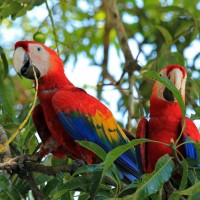 Costa Rica Birding & Nature FULL - See our March departure!January 5 - 12, 2026, w/Pacific Coast extension
Costa Rica Birding & Nature FULL - See our March departure!January 5 - 12, 2026, w/Pacific Coast extension -
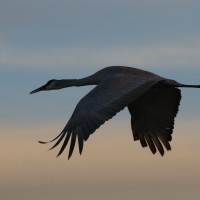 New Mexico: Winter Birds & Grand Landscapes FULL - See New Mexico Nature & Culture in December!January 18 - 26, 2026
New Mexico: Winter Birds & Grand Landscapes FULL - See New Mexico Nature & Culture in December!January 18 - 26, 2026 -
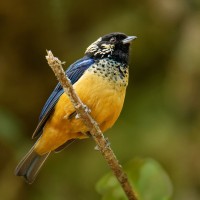 Western Panama: Tranquilo Bay FULL - See our March departure!February 7 - 14, 2026, w/Mt. Totumas extension
Western Panama: Tranquilo Bay FULL - See our March departure!February 7 - 14, 2026, w/Mt. Totumas extension -
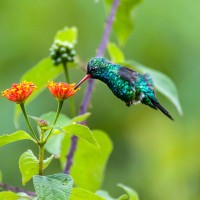 Northwest Argentina Only two spaces left!March 4 - 17, 2026, w/Iguazu Falls extension
Northwest Argentina Only two spaces left!March 4 - 17, 2026, w/Iguazu Falls extension -
 Nome Sweet Nome! FULL - Check out Alaska’s Northern Passages & Glacier Bay!May 28 - June 4, 2026
Nome Sweet Nome! FULL - Check out Alaska’s Northern Passages & Glacier Bay!May 28 - June 4, 2026 -
 Classic Alaska: Birding & Wildlife: Anchorage, Nome, Seward & Kenai Fjords FULL - Check out Alaska Sampler in August!June 2 - 11, 2026
Classic Alaska: Birding & Wildlife: Anchorage, Nome, Seward & Kenai Fjords FULL - Check out Alaska Sampler in August!June 2 - 11, 2026 -
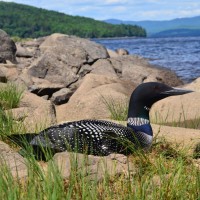 Summer in Maine: From Acadia to the NorthwoodsJuly 7 - 14, 2026
Summer in Maine: From Acadia to the NorthwoodsJuly 7 - 14, 2026 -
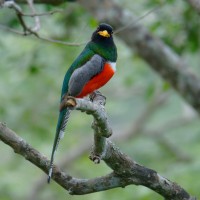 Arizona Monsoon Madness: Birding & Nature in a Season of Wonder!August 23 - 30, 2026
Arizona Monsoon Madness: Birding & Nature in a Season of Wonder!August 23 - 30, 2026 -
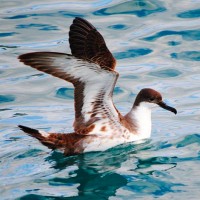 Maine's Monhegan IslandSeptember 6 - 13, 2026
Maine's Monhegan IslandSeptember 6 - 13, 2026 -
 Cape May: Fall MigrationOctober 13 - 19, 2026
Cape May: Fall MigrationOctober 13 - 19, 2026 -
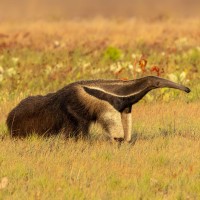 Guyana: Unspoiled WildernessNovember 5 - 17, 2026
Guyana: Unspoiled WildernessNovember 5 - 17, 2026
-
-
Vernie Aikins
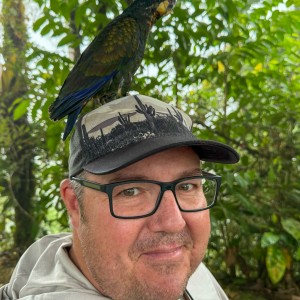
Vernie fell in love with birding in Southern Arizona in 2011 through his love of photography, starting out with just a camera and guide book. He started guiding in 2021 with his wife’s non-profit S.A.A.W.R. and the Tucson Audubon leading bird outings for people with disabilities. Though Vernie is primarily the Office Administrator at Naturalist Journeys, he does get the chance to guide from time to time. His excitement in seeing a Turkey Vulture (his favorite bird) for the 50th time or a lifer is contagious, and he has a true passion for helping others find, identify, and enjoy birds. As an avid mountain biker, he also started a non-profit focusing on trail maintenance and reopening trails after the devastating fires in the Catalina Mountains in 2003, overseeing thousands of hours of volunteer trail work. His favorite place to be is in Southern Arizona exploring along the Santa Cruz River or high up in one of the Sky Islands.
Other trips with Vernie Aikins
-
 New Mexico: Winter Birds & Grand Landscapes FULL - See New Mexico Nature & Culture in December!January 18 - 26, 2026
New Mexico: Winter Birds & Grand Landscapes FULL - See New Mexico Nature & Culture in December!January 18 - 26, 2026 -
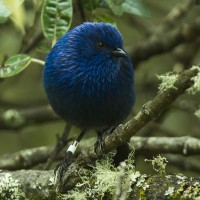 Birds & Mammals of Ecuador's Andes FULL - Check out Colombia: Santa Marta & the Atlantic Coast!March 5 - 18, 2026
Birds & Mammals of Ecuador's Andes FULL - Check out Colombia: Santa Marta & the Atlantic Coast!March 5 - 18, 2026 -
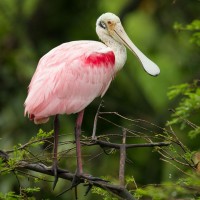 Louisiana: Birds, Bayous & BeignetsApril 16 - 22, 2026
Louisiana: Birds, Bayous & BeignetsApril 16 - 22, 2026 -
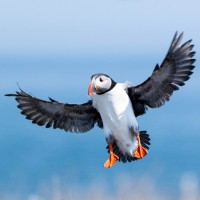 Maine Puffin Extravaganza Machias Seal Island: Up Close and PersonalJune 8 - 14, 2026
Maine Puffin Extravaganza Machias Seal Island: Up Close and PersonalJune 8 - 14, 2026 -
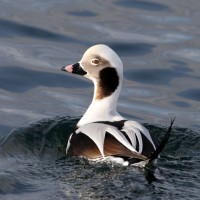 Olympic Peninsula Fall ExplorerSeptember 10 - 17, 2026
Olympic Peninsula Fall ExplorerSeptember 10 - 17, 2026
-
Essential Information +
Packing List +
Suggested Reading List +
Useful Links +
Photo credits: Banners: Whitewater Draw Sunset by Hugh Simmons Photography; Sandhill Cranes in formation by Peg Abbott; Chiricahua National Monument by Hugh Simmons Photography; Greater Roadrunner by Hugh Simmons, Whitewater Draw by Hugh Simmons; Vermillion Flycatcher by Hugh Simmons; Sandhill Cranes by Peg Abbott. Canyon Wren, Peg Abbott; Fall Colors, Peg Abbott; Rufous-collared Sparrow, Peg Abbott; Roadrunner by Peg Abbott; Coati by Peg Abbott; Red-naped Sapsucker, Peg Abbott; Fall colors, Peg Abbott; Group, Hugh Simmons; Sandhill Cranes, Peg Abbott; Western Meadowlark, Hugh Simmons; Violet-crowned Hummingbird, Hugh Simmons; Northern Pintail, Peg Abbott; Snow Geese, Peg Abbott; Sandhill Cranes flying, Peg Abbott; Bobcat, Peg Abbott; Bendire’s Thrasher, Peg Abbott; Group walking, Naturalist Journeys Stock; Marsh Wren, Peg Abbott; Northern Harrier, Peg Abbott; Vermilion Flycatcher, Steve Bull; Arizona in the Fall, Peg Abbott; Bisbee Town, Hugh Simmons Photography; Coronado, Hugh Simmons Photography; Sandhill Cranes, Hugh Simmons Photography; Canyon Wren, Peg Abbott; Fall AZ, Peg Abbott; Red-naped Sapsucker, Peg Abbott; Rufous-collared Sparrow, Peg Abbott;






